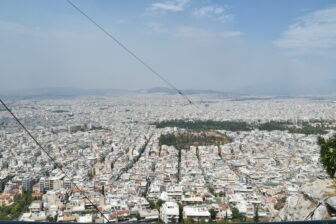
[Aug. 2023] On our second day in Athens, Greece, my friend headed for the Acropolis and we headed for Lycavittus Hill.
We had been to the Acropolis before, but it wasn’t something we wanted to visit again.
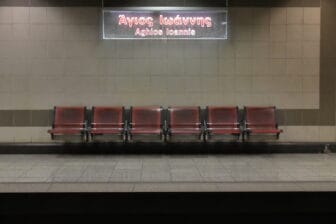
We bought a one-day metro ticket (€4.10) and went to Syntagma station.
Tickets for the Athens metro were easy to buy and easy to understand.
However, at this time in August, I saw a lot of people still wearing masks, and I was a little worried that the coronavirus was spreading.
In the end, we did not have any problems, though.
We went out to the ground at Syntagma and then decided to see the guards.
The guards who protect the Tomb of the Unknown Soldier 24 hours a day are elites called “Evzones” and must be at least 188 cm tall (I remember that there was a similar regulation in Taiwan, which we visited a long time ago).
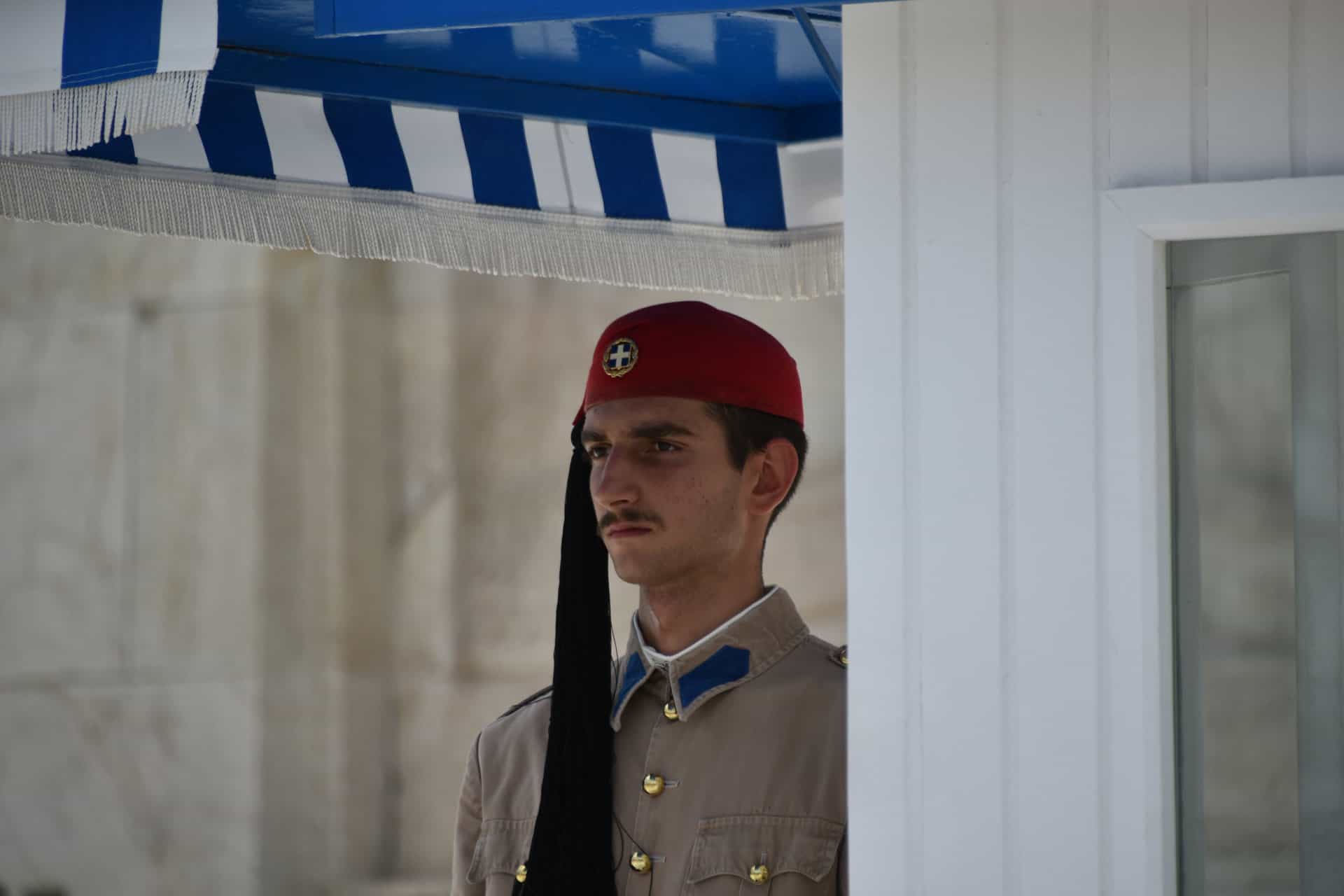
They remain upright and motionless, switching sides once every 30 minutes, and there is a switching ceremony once every hour.
When we got there, the guards were just entering the left and right boxes, so we had to wait for a while.
My husband saw a soldier in camouflage uniform wiping away the sweat of a guard standing inside a box that looked like it was selling ice cream.
Before long, the two guards came out and the performance began.
They raise their legs to 90 degrees, then do a little plié with their pivot leg and stop still.
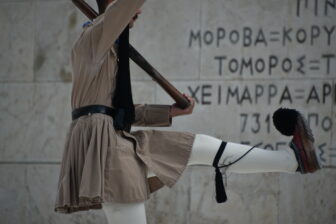
Then bend and straighten their feet.
This should take a lot of practice.
It would look bad if they wobble at this moment.
I tried to imitate it, but it’s quite difficult.
I wanted to know about the choreography of this performance, so I searched all over the place, but in the end I couldn’t really find the reason why they move like this.
One theory is that a certain king was so nostalgic for his beloved horse that he made his guards walk like horses.
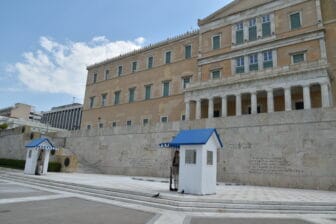
But I don’t think horses would perform like this, so I have doubts.
However, the stomping of the foot is said to be to let the deceased Unknown Soldiers know that Greece continues to live as a free nation.
I also found that the reason why the guards were moving slowly was to gradually improve the blood circulation of the guards who had been standing motionless so long.
The active duty guards are said to have undergone one month of training and passed a test.

As for the clothes they wear, they are their national costume called “Fustanera,” and it is said to be the military uniform they wore when they won independence in the first half of the 19th century after 400 years of Ottoman rule.
Shoes with particularly eye-catching bonbons are called Tsarouchi, and they weigh 3 to 4 kilograms.
Since they are lifting their legs while wearing these, their ankles must be very strong.
When we saw them, they were wearing beige casual uniforms, but on Sundays when there is a big ceremony, they wear elaborate uniforms with intricate patterns on a white background.
It has 400 pleats (representing 400 years of Turkish rule) and is made from 30 meters of fabric.
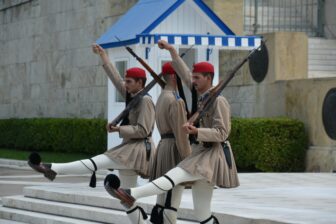
While we were watching, three new substitutes came in and replaced them with similar performances.
One of the new guards may have been a novice, since his leg did not reach 90 degrees.



